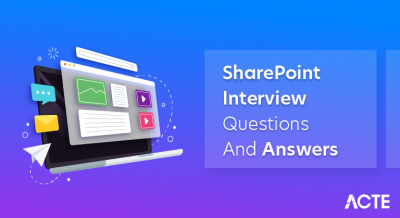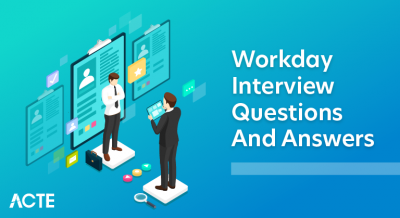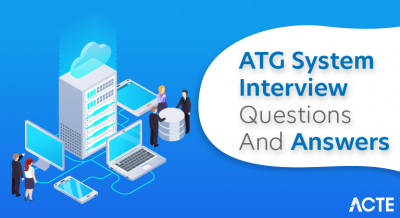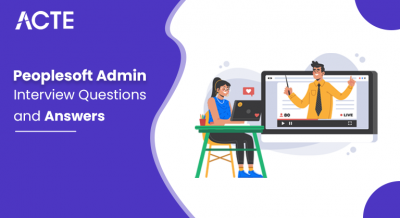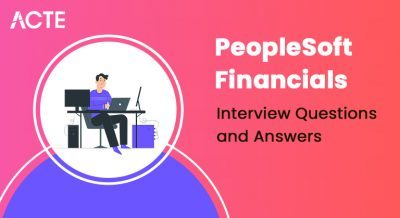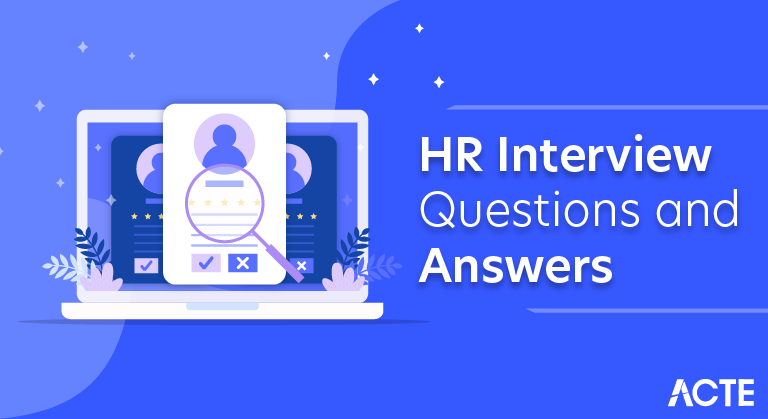
These HR Interview Questions have been designed specially to get you acquainted with the nature of questions you may encounter during your interview for the subject of HR As per my experience good interviewers hardly plan to ask any particular question during your interview, normally questions start with some basic concept of the subject and later they continue based on further discussion and what you answer .we are going to cover top 100 HR Interview questions along with their detailed answers. We will be covering HR scenario based interview questions HR interview questions for fresher’s as well as interview HR questions and answers for experienced
1. Can you describe your approach to handling employee conflicts or disputes within a team?
Ans:
- Encourage open communication.
- Address conflicts promptly to prevent escalation.
- Create a safe space for team members to express concerns.
- Foster a culture that values constructive feedback.
- Use active listening to understand each party’s perspective.
- Mediate and facilitate resolution collaboratively.
2. Ensure smooth onboarding and cultural integration for new hires?
Ans:
| Strategies | Implementation | |
| Structured Onboarding Program |
Develop a comprehensive program covering policies, procedures, and team introductions. | |
| Welcome Package | Provide new hires with a welcome package containing essential information and company swag. | |
| Buddy System | Assign a mentor or “buddy” to guide new hires, offering support and answering questions. |
3. How did you handle an employee performance issue, and what was the outcome?
Ans:
Addressing a recurring performance issue, I held a private discussion with the employee to identify challenges. We collaboratively created a performance improvement plan, setting clear goals and support measures. Through regular check-ins and constructive feedback, the employee responded positively, meeting targets. This approach not only improved individual performance but also enhanced the overall team dynamic.
4. How do you foster employee engagement and motivation?
Ans:
Promoting open communication and recognition initiatives, like employee-of-the-month programs, have been key to fostering employee engagement in my experience. These efforts create a culture where employees feel heard and appreciated, contributing to increased motivation and team morale.
5. How do you stay updated on employment laws and ensure company compliance?
Ans:
Continuous Education : Stay updated through regular training.
Legal Resources : Use legal publications and resources.
Collaboration : Foster collaboration with legal experts.
Policy Review : Regularly review and update company policies.
Training Programs : Implement training programs for staff awareness.
6. What is your approach to talent acquisition and retaining top talent in a competitive market?
Ans:
In talent acquisition, I develop a strategic recruitment plan aligned with organizational goals.Building a strong employer brand and utilizing targeted sourcing methods help attract top talent. I focus on competitive compensation, professional development opportunities, and a positive workplace culture to ensure talent retention in a competitive market.
7. Share a scenario of successfully implementing a diversity and inclusion initiative in the workplace?
Ans:
Successfully implemented a workplace diversity initiative, addressing challenges of resistance and limited awareness. Launched targeted awareness programs, conducted comprehensive training sessions, and established transparent communication channels. Leveraged leadership support to foster inclusivity and encouraged employee input. Monitored progress through regular assessments and adjusted strategies accordingly. The initiative not only improved diversity metrics but also enhanced the overall workplace culture and collaboration.
8. How do you handle confidential employee information?
Ans:
Secure Systems : Use secure digital platforms.
Restricted Access : Limit access to confidential data.
Employee Training :Provide training on data security.
Privacy Policies : Enforce strict privacy policies.
Regular Audits : Conduct regular security audits.
9. Explain Process for conducting effective exit interviews?
Ans:
Goal Alignment : Align performance goals with organizational objectives.
Two-way Communication : Encourage open dialogue for employee input.
Constructive Feedback : Provide specific, constructive feedback on achievements and areas for improvement.
Goal Setting : Collaboratively set clear and measurable performance goals.
10. How do you promote a positive company culture?
Ans:
In a dynamic work environment, I foster a positive company culture by prioritizing open communication, recognizing achievements, and involving employees in decision-making. Regular feedback and recognition programs celebrate individual contributions, creating a sense of value and ownership. Transparent communication about the company’s vision and goals ensures alignment with employee efforts, promoting an inclusive and appreciative work culture.
11. Describe strategies for positive work environment and employee engagement?
Ans:
In building strong relationships with employees, I prioritize open communication, active listening, and fostering a supportive work environment. Regular check-ins, team-building activities, and recognizing individual contributions contribute to a positive employee experience.
12. Describe a situation of successfully implementing a change management strategy?
Ans:
Successfully implementing a change management strategy involved addressing resistance through effective communication, involving key stakeholders, and providing comprehensive training. Overcoming challenges required fostering a culture of adaptability and emphasizing the benefits of the change.
13. Describe your process for effective exit interviews?
Ans:
During a conflict between team members, I facilitated open communication, identified underlying issues, and encouraged mutual understanding. The resolution involved creating a structured plan for improved collaboration, supported by ongoing communication and team-building initiatives.
14. What methods do you use to stay updated on industry trends and best practices in HR?
Ans:
I stay updated through continuous professional development, attending industry conferences, and subscribing to reputable HR publications. Networking with peers and participating in webinars further enhances my awareness of evolving trends.
15. Describe your process for effective exit interviews ?
Ans:
I conduct comprehensive exit interviews by creating a comfortable environment for departing employees to share honest feedback. Open-ended questions and a focus on constructive insights help extract valuable information, contributing to continuous improvement.
16. How do you approach creating and maintaining a diverse?
Ans:
I prioritize diversity and inclusion through targeted recruitment strategies, awareness training, and forming employee resource groups. Initiatives include mentorship programs, unconscious bias training, and regularly assessing inclusivity metrics to measure progress and identify areas for improvement.
17. Describe your approach to handling employee relations in a remote work setting?
Ans:
I ensure strong employee relations in remote work through consistent communication and virtual team-building. Challenges like potential isolation are tackled with regular check-ins and open dialogue, fostering a connected and engaged remote team.
18. How do you measure the success of employee training and development programs?
Ans:
I gauge training success by tracking performance improvements and employee feedback. An example is a leadership development program, where participants showcased enhanced leadership skills, leading to increased team productivity and employee satisfaction.
19. What strategies do you use to retain high-performing employees and reduce turnover?
Ans:
To retain high-performing employees, I implement personalized development plans, competitive compensation, and recognition programs. Regular feedback and opportunities for career growth contribute to a positive work environment, reducing turnover.
20. Explain your process for conducting effective recruitment interviews?
Ans:
I structure interviews to align with job requirements, assessing skills and cultural fit through behavioral questions. Involving team members in the interview process provides diverse perspectives on a candidate’s compatibility with the organization’s culture.
21. How do you approach compensation and benefits planning to ensure competitiveness in the job market?
Ans:
My approach involves market analysis, considering employee preferences, and aligning with organizational goals. Offering competitive base pay, performance bonuses, and a comprehensive benefits package ensures competitiveness in the job market.
22. Describe a time when you had to manage a workforce reduction or restructuring?
Ans:
My approach involves market analysis, considering employee preferences, and aligning with organizational goals. Offering competitive base pay, performance bonuses, and a comprehensive benefits package ensures competitiveness in the job market.
23. Describe your approach to promoting diversity?
Ans:
During a restructuring, transparent communication is paramount. I communicated changes with empathy, provided support services, and offered clear explanations. Ensuring transparency and fairness helped employees understand the necessity and navigate the transition effectively.
24. How do you handle conflicts between management and employees?
Ans:
To ensure fairness, I establish standardized interview processes, conduct blind resume reviews, and implement diversity training. Regularly reviewing recruitment metrics helps identify and address any biases, fostering an inclusive hiring environment.
25. Can you share an example of a time when you had to handle a sensitive HR investigation?
Ans:
I address conflicts by promoting open communication, facilitating mediation when necessary, and implementing conflict resolution training. Establishing clear communication channels and fostering a culture of transparency helps bridge gaps between management and employees.
26. can you explain the role of HR in an organization?
Ans:
During a sensitive investigation, confidentiality is ensured through limited access to information, anonymizing details when possible, and communicating only essential information on a need-to-know basis. Fairness is maintained by conducting a thorough and impartial inquiry, providing due process to all involved parties, and ensuring compliance with relevant laws and policies.
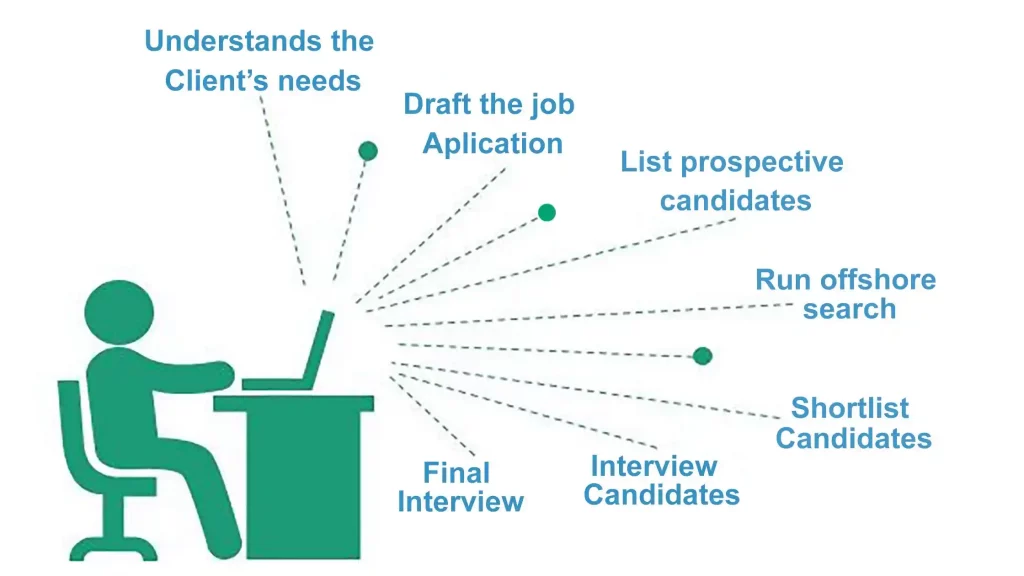
27. What motivated you to pursue a career in HR?
Ans:
HR plays a pivotal role by managing employee lifecycle from recruitment to exit. Responsibilities include talent acquisition, performance management, and legal compliance. HR fosters positive workplace relations and oversees compensation and benefits. It ensures training and development opportunities for employee growth.
28. How do you stay updated on the pursue a careertrends and best practices?
Ans:
My passion lies in working with people and helping them succeed in their roles. I am drawn to problem-solving and finding effective solutions in the workplace. Effective communication and interpersonal interactions appeal to me. Contributing to a positive work environment and organizational success motivates me. The legal and compliance aspects of HR align with my interests.
29. Can you describe your experience with HRIS (Human Resources Information System)?
Ans:
I stay current on HR trends through continuous professional development and industry publications. Attending conferences and workshops helps me learn about emerging practices. Networking with HR professionals and participating in forums expands my knowledge. Online courses and webinars are valuable resources for staying updated. I also make use of reputable HR journals and publications.
30. Explain the importance of diversity and inclusion in the workplace.
Ans:
- Vital for fostering innovation, creativity, and diverse perspectives.
- Inclusive environments boost engagement, job satisfaction, and retention.
- Diverse talent enhances competitiveness and aligns with societal values.
- Integral for creating a dynamic, adaptive, and successful workplace.
31. How do you approach employee relations to maintain a positive work environment?
Ans:
- Prioritize open communication and active listening for understanding.
- Conduct surveys and feedback sessions to address employee concerns.
- Mediate conflicts promptly, focusing on resolution and positivity.
- Provide resources for employee development, demonstrating organizational support.
32. Describe your experience with conducting new employee orientations?
Ans:
- Led new employee orientations, ensuring a smooth onboarding process.
- Developed comprehensive orientation programs covering company culture, policies, and procedures.
- Implemented feedback mechanisms to continuously improve the orientation process.
- Ensured a positive introduction to the organization for new hires.
33. How do you handle conflict resolution between employees?
Ans:
- Address conflicts promptly, fostering open communication between involved parties.
- Utilize mediation techniques to facilitate resolution and maintain positive relationships.
- Implement conflict prevention strategies, such as team-building activities and communication workshops.
- Prioritize fairness and objectivity while addressing employee concerns.
34. Can you discuss your approach to performance management and employee evaluations?
Ans:
- Implement a transparent and goal-oriented performance management system.
- Conduct regular check-ins to provide continuous feedback and address performance issues proactively.
- Utilize a collaborative approach in setting performance goals, aligning them with organizational objectives.
- Conduct fair and constructive performance evaluations, emphasizing areas of improvement and recognition of achievements.
35. What strategies do you use for talent acquisition and recruitment?
Ans:
- Employ targeted sourcing and diverse recruitment channels.
- Ensure a streamlined and candidate-friendly application process.
- Foster employer branding for attracting and retaining top talent.
36. How do you stay compliant with labor laws and regulations?
Ans:
Regularly update HR policies to ensure legal compliance. Stay informed through continuous training and legal updates. Conduct internal audits to identify and address compliance gaps.
37. Can you share an example of a successful employee retention strategy you implemented?
Ans:
Introduced mentorship programs for professional growth. Implemented flexible work arrangements for improved work-life balance. Conducted regular feedback sessions and recognition programs to enhance job satisfaction.
38. How do you address workplace harassment or discrimination complaints?
Ans:
- Respond promptly, ensuring a confidential and thorough investigation.
- Enforce a zero-tolerance policy and take appropriate disciplinary actions.
- Provide support resources and maintain open communication.
- Implement preventive measures, including regular diversity and inclusion training.
39. Describe your approach to onboarding new employees effectively.
Ans:
- Develop comprehensive onboarding programs covering culture, policies, and responsibilities.
- Facilitate mentorship or buddy systems for smoother integration.
- Gather feedback for continuous improvement.
- Ensure a seamless and positive experience to enhance engagement.
40. What role does HR play in employee training and development?
Ans:
- Identify training needs aligned with business goals.
- Design and implement programs to enhance skills and competencies.
- Monitor performance through training initiatives.
- Collaborate for a culture of continuous learning and development.
41. Can you discuss your experience with compensation and benefits administration?
Ans:
- Administered competitive compensation structures and benefits programs.
- Conducted market research for fair and attractive salary offerings.
- Managed employee benefits, addressing inquiries promptly.
- Implemented cost-effective measures for optimized packages.
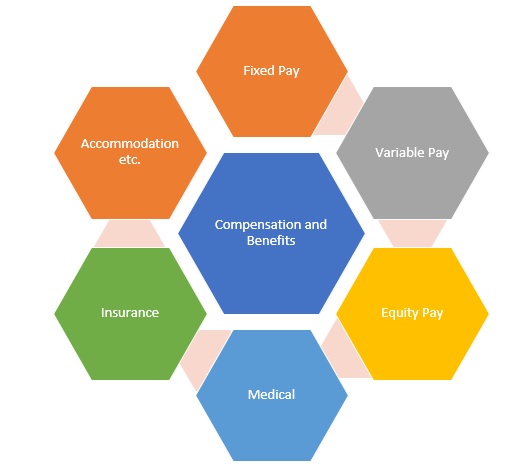
42. What metrics do you use to measure the success of HR programs?
Ans:
- Measured success through employee retention rates.
- Tracked employee engagement levels and satisfaction surveys.
- Assessed training program effectiveness with performance improvement metrics.
- Monitored diversity and inclusion metrics for overall organizational success.
43. Can you share an example of a challenging HR situation you successfully resolved?
Ans:
- Successfully resolved a conflict by mediating between two departments.
- Implemented a structured communication plan to address concerns.
- Conducted training sessions on conflict resolution and teamwork.
- Monitored progress and provided ongoing support, fostering a positive work environment.
44. How do you handle employee performance issues?
Ans:
I address performance issues through clear communication, setting expectations, providing constructive feedback, and developing improvement plans. It’s essential to be fair, consistent, and supportive while helping employees reach their potential.
45. How do you ensure fair and unbiased recruitment and hiring processes?
Ans:
- Used blind recruitment practices for initial assessments.
- Employed diverse interview panels to minimize biases.
- Conducted regular training on fair hiring practices.
- Established standardized criteria for candidate evaluation.
46. How do you handle succession planning within an organization?
Ans:
- Implemented structured succession planning initiatives.
- Identified high-potential employees and provided development opportunities.
- Established clear career paths and mentorship programs.
- Regularly reviewed and updated succession plans to align with organizational goals.
47. Can you discuss your experience with creating and implementing HR policies?
Ans:
- Developed comprehensive, legally aligned HR policies.
- Conducted regular reviews and updates for relevance and compliance.
- Implemented effective communication strategies for policy changes.
- Provided training for understanding and adherence.
48. Explain the importance of regular performance feedback for employees.
Ans:
- Fosters continuous improvement and skill development.
- Enhances engagement, job satisfaction, and motivation.
- Allows for timely recognition of achievements and adjustments.
- Supports a positive workplace culture with open communication.
49. How do you handle employee requests for flexible work arrangements?
Ans:
- Evaluated requests case by case, considering business needs.
- Maintained open communication, discussing options and expectations.
- Developed clear policies outlining eligibility and arrangements.
- Implemented trial periods with feedback for adjustments as needed.
50. Can you share your experience with conducting exit interviews?
Ans:
- Conducted exit interviews for insights into employee departures.
- Analyzed feedback, identified trends, and implemented changes.
- Used exit data to adjust HR strategies for talent management.
- Enhanced organizational improvement based on exit interview findings.
51. How do you address and prevent burnout among employees?
Ans:
- Implemented check-ins to monitor workload and stress levels.
- Promoted work-life balance with flexible scheduling and remote options.
- Conducted stress management workshops and provided mental well-being resources.
- Encouraged open communication about workload challenges and solutions.
52. Describe your approach to managing HR budgets and resources.
Ans:
- Developed and monitored HR budgets aligned with organizational goals.
- Conducted cost-benefit analyses for optimized resource allocation.
- Negotiated vendor contracts for cost savings without compromising quality.
- Implemented tracking systems to monitor expenditures and adjust budgets as needed.
53. How do you ensure a smooth communication flow between HR and other departments?
Ans:
- Facilitate regular cross-departmental meetings and use collaboration tools.
- Implement feedback mechanisms to address communication gaps.
- Foster a culture of transparency and responsiveness.
- Streamline information sharing for effective collaboration.
54. Explain the role of HR in promoting a healthy work-life balance.
Ans:
- Advocate for flexible work arrangements and stress management support.
- Encourage realistic workload expectations and set after-hours communication boundaries.
55. How do you handle situations where employees are resistant to change?
Ans:
- Communicate change reasons transparently, emphasizing benefits.
- Foster an open dialogue to address concerns and provide reassurance.
56.Describe your approach to creating a diverse and inclusive hiring process?
Ans:
- Implement blind recruitment practices to reduce unconscious biases.
- Utilize diverse interview panels to ensure a range of perspectives.
- Establish clear criteria for evaluating candidates to ensure objectivity.
- Regularly review and update hiring processes to enhance inclusivity
57. Can you discuss your experience with developing and delivering HR training programs?
Ans:
- Identify organizational training needs aligned with business goals.
- Design and deliver tailored programs for employee development.
- Utilize various training methods for engaging and effective learning experiences.
- Continuously assess and adapt training programs to meet evolving organizational needs.
58. How do you handle employee complaints about management?
Ans:
- Establish a confidential and accessible process for lodging complaints.
- Conduct thorough investigations, ensuring fairness and impartiality.
- Provide clear communication on the resolution process and outcomes.
- Implement preventive measures, such as management training and feedback mechanisms, to address systemic issues.
59. Explain the importance of ethical behavior in HR?
Ans:
Ethical behavior in HR is vital for building trust and credibility, fostering a positive workplace culture, and maintaining high employee morale. It ensures fair treatment, equity, and compliance with laws, contributing to a respectful and inclusive work environment. Additionally, ethical HR practices enhance the organization’s reputation and help attract and retain top talent.
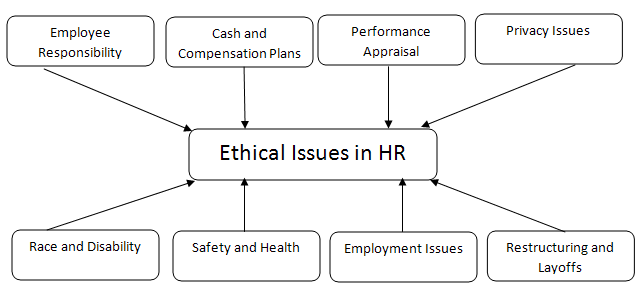
60. How do you foster teamwork and collaboration within an organization?
Ans:
- Encourage open communication and team-building activities.
- Recognize and celebrate team achievements to strengthen relationships.
- Promote a collaborative culture through cross-functional opportunities.
61. Can you discuss your experience with implementing wellness programs for employees?
Ans:
- Developed and implemented wellness initiatives for employee well-being.
- Conducted health assessments and organized fitness and mental health activities.
- Monitored program effectiveness and adjusted based on employee feedback.
62. Describe your approach to handling employee requests for accommodations?
Ans:
- Prioritize open communication to understand individual needs.
- Collaborate to find reasonable and effective accommodation solutions.
- Ensure compliance with legal requirements and company policies.
- Strive to create an inclusive and supportive work environment.
63. How do you handle situations where employees violate company policies?
Ans:
- Conduct fair investigations to gather relevant information.
- Communicate clearly about violations, emphasizing consequences.
- Implement appropriate disciplinary actions with consistency.
- Offer guidance and support for understanding and adherence.
64. Can you discuss your experience with handling HR issues in remote work settings?
Ans:
- Adapted HR policies to accommodate remote work challenges.
- Provided support and resources for remote employees.
- Conducted virtual training on remote work best practices.
- Addressed issues promptly, maintaining effective communication.
65. Describe your approach to managing and resolving disputes between employees?
Ans:
- Facilitate open communication and active listening to understand concerns.
- Mediate disputes impartially, encouraging collaborative resolutions.
- Establish clear conflict resolution processes and provide guidance to involved parties.
- Monitor progress and follow up to ensure sustained positive working relationships.
66. How do you measure the success of diversity and inclusion initiatives?
Ans:
- Utilize metrics such as diversity representation in hiring and promotions.
- Conduct regular surveys and focus groups to gather employee feedback.
- Track retention rates and employee satisfaction with diversity and inclusion efforts.
- Assess progress against predefined diversity and inclusion goals and benchmarks.
67. Can you discuss your experience with conducting salary surveys and benchmarking?
Ans:
- Conducted comprehensive salary surveys to analyze compensation trends.
- Utilized benchmarking data to ensure competitive and fair salary structures.
- Regularly reviewed and updated compensation policies based on survey findings.
- Ensured compliance with industry standards and legal requirements.
68.Explain your approach to staying current with changes in employment law.
Ans:
- Attend legal seminars and maintain memberships for continuous professional development.
- Regularly review legal publications, industry updates, and government regulations.
- Collaborate with legal counsel and attend conferences to discuss emerging trends.
- Conduct internal training sessions and establish a systematic process for policy reviews.
69. How do you create personalized development plans for employees?
Ans:
Creating personalized development plans involves assessing current skills, collaborating on realistic goals, and aligning them with career aspirations. Identify suitable learning opportunities, considering formal and informal methods. Develop a clear timeline with manageable milestones to track progress. Regularly review and adjust the plan based on evolving needs and performance feedback. Encourage open communication to ensure the employee feels supported in their development journey.
71.What strategies do you employ to facilitate a smooth organizational change?
Ans:
Designed a leadership development program for mid-level managers, emphasizing strategic thinking and effective communication. Incorporated interactive workshops and mentorship opportunities. Measured success through improved team performance, higher employee satisfaction, and increased career advancement rates. Continuous feedback loops ensured ongoing refinement and alignment with organizational goals.
72. How do you address resistance to change among employees?
Ans:
- Communicate the reasons and benefits of the change transparently.
- Involve employees in the change process, seeking their input and feedback.
- Provide comprehensive training and resources to support the transition.
- Establish a change management team to guide and facilitate the process.
73. What challenges have you encountered in managing remote teams, and how did you address them?
Ans:
- Acknowledge and validate employees’ concerns and emotions.
- Clearly communicate the purpose and positive outcomes of the change.
- Foster open dialogue, addressing questions and misconceptions.
- Provide additional support, training, or resources to help employees adapt.
73. What challenges have you encountered in managing remote teams, and how did you address them?
Ans:
- Addressed communication challenges through regular virtual check-ins.
- Promoted team cohesion via virtual team-building activities.
- Managed productivity by setting clear expectations and providing support.
- Combated feelings of isolation with virtual social interactions.
74. Can you discuss the implementation of policies to support a remote work environment?
Ans:
- Established flexible schedules with core working hours for adaptability.
- Provided guidelines for secure and effective remote work technology use.
- Defined communication protocols for virtual meetings and information sharing.
- Implemented wellness support policies, including mental health resources and flexible time-off options.
75. Can you describe your approach to identifying and nurturing leadership talent within an organization?
Ans:
Identification : Use performance assessments, feedback, and succession planning.
Mentorship : Pair talent with experienced leaders for skill development.
Training Opportunities : Provide targeted programs for leadership skills.
Challenging Assignments : Offer leadership opportunities through projects.
76. Share an example of a successful leadership development program you’ve been involved in?
Ans:
Design : Developed a program on strategic thinking and effective communication.
Implementation : Incorporated mentorship, workshops, and real-world challenges.
Measuring Success : Tracked improved team performance and career advancement.
Continuous Improvement : Adjusted based on feedback and evolving organizational needs.
77. Strategy for ensuring the right talent is in place for future organizational needs through workforce planning?
Ans:
Identify Future Needs : Collaborate with department heads for insights.
Skill Gap Analysis : Analyze current skills versus future requirements.
Training and Development : Implement programs to address gaps.
Flexible Staffing : Explore adaptable models for changing needs.
78. Can you discuss your experience with succession planning and talent pipelining?
Ans:
Proactive Identification : Identified potential leaders through assessments and feedback.
Mentorship Programs : Established mentorship for skill development.
Structured Succession Plans : Implemented plans for key roles.
Continuous Refinement : Adjusted based on organizational and individual growth.
79. How do you approach workforce planning to ensure the right talent is in place for future organizational needs?
Ans:
Identify Future Needs : Collaborate with department heads for insights.
Skill Gap Analysis : Analyze current skills versus future requirements.
Training and Development : Implement programs to address gaps.
Flexible Staffing : Explore adaptable models for changing needs.
80. Can you discuss your experience with succession planning and talent pipelining?
Ans:
Proactive Identification : Identified potential leaders through assessments and feedback.
Mentorship Programs : Established mentorship for skill development.
Structured Succession Plans : Implemented plans for key roles.
Continuous Refinement : Adjusted based on organizational and individual growth.
81. How do you measure and improve employee engagement within an organization?
Ans:
Measuring Employee Engagement :
- Use surveys, feedback sessions, and metrics like turnover and absenteeism.
- Analyze participation in initiatives and employee development programs.
- Employ sentiment analysis tools and regular pulse surveys for real-time insights.
Improving Employee Engagement :
- Foster open communication through town hall meetings and feedback forums.
- Implement recognition and reward programs for employee contributions.
82. How do you approach setting performance goals for employees that align with organizational objectives?
Ans:
- Collaborate with employees to establish SMART goals aligned with organizational objectives.
- Ensure goals are specific, measurable, achievable, relevant, and time-bound.
- Regularly revisit and realign individual goals with shifting organizational priorities.
- Foster a sense of ownership and connection between individual contributions and company success.
83. What strategies do you use to provide constructive feedback and support employee development?
Ans:
- Offer timely and specific feedback, highlighting strengths and areas for improvement.
- Use a growth-oriented approach, framing feedback as opportunities for learning.
- Establish clear communication channels for ongoing performance dialogue.
- Provide resources, training, and mentorship to support employees in achieving developmental goals.
84. How do you contribute to shaping and fostering a positive organizational culture?
Ans:
In shaping and fostering a positive organizational culture, I contribute by promoting open communication, encouraging collaboration, and leading by example. I emphasize values alignment, recognize and celebrate achievements, and prioritize employee well-being. Regular feedback and transparent leadership help create a supportive and inclusive workplace, contributing to a positive organizational culture.
85. Can you discuss a situation where you successfully influenced a cultural change within a team?
Ans:
Identified areas for improvement through employee feedback and assessments. Implemented initiatives such as team-building activities and cross-functional collaboration. Conducted training programs to reinforce the desired cultural values. Monitored progress through regular assessments and adjusted strategies based on feedback, resulting in a positive cultural shift.
86. What methods do you use to identify training needs and design effective learning programs?
Ans:
- Conduct needs assessments through surveys, evaluations, and skill gap analyses.
- Regularly communicate with leaders to understand specific departmental needs.
- Use customer feedback and market trends to identify relevant training areas.
- Analyze performance metrics and employee feedback for targeted skill development.
87. Given an example for training initiative that resulted in measurable improvements in employee skills?
Ans:
Tailor programs to address identified needs and align with organizational goals. Utilize diverse training methods, including workshops, e-learning, and mentorship. Incorporate interactive elements to enhance engagement and knowledge retention. Continuously assess and update programs based on feedback and evolving organizational needs.
88. How do you create and implement effective recruitment strategies to attract top talent?
Ans:
Develop a compelling employer brand highlighting values and culture. Use targeted job descriptions and diverse recruitment channels. Implement a streamlined process for efficient communication.
89. Can you discuss a challenging recruitment scenario you’ve encountered and how you addressed it?
Ans:
- Faced difficulty attracting specialized talent in a competitive market.
- Implemented targeted outreach through industry events and networks.
- Offered competitive packages and collaborated with hiring managers to redefine requirements, successfully attracting the right candidates.
90. How do you prioritize and support employee well-being in the workplace?
Ans:
- Encourage a healthy work-life balance with reasonable working hours.
- Provide mental health resources, including Employee Assistance Programs.
- Establish flexible work arrangements and remote options when possible.
- Foster a culture that values open communication about well-being.
- Offer outlets for stress relief to support overall employee wellness.
91. Can you share an example of a wellness initiative that positively impacted employee morale?
Ans:
- Launched “Wellness Wednesday” with mindfulness sessions, fitness classes, and healthy snacks.
- Encouraged team members to share personal well-being goals and achievements.
- Provided access to wellness challenges with participation incentives.


